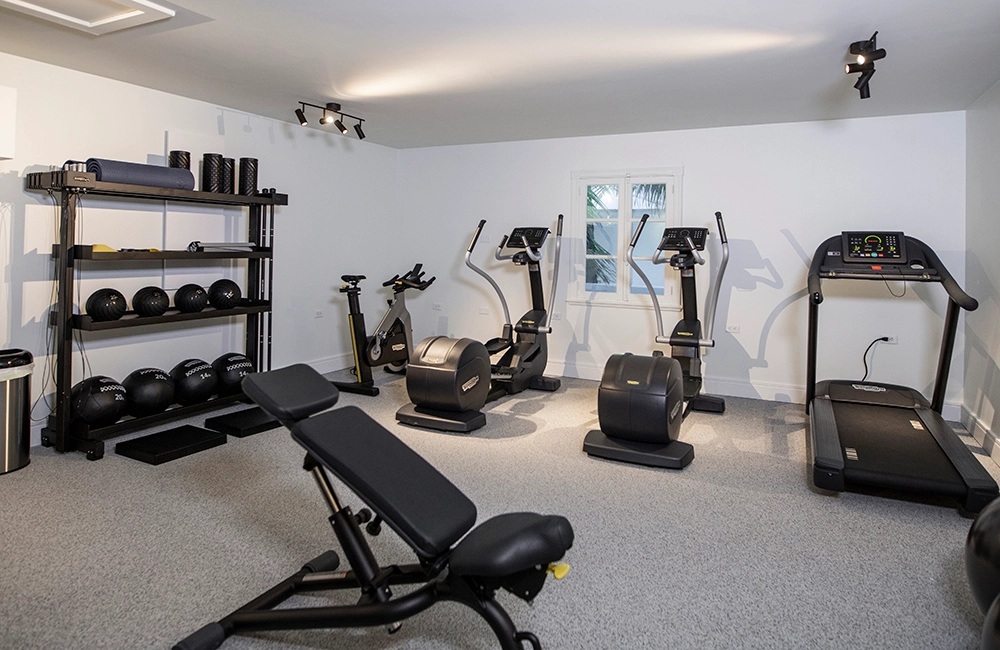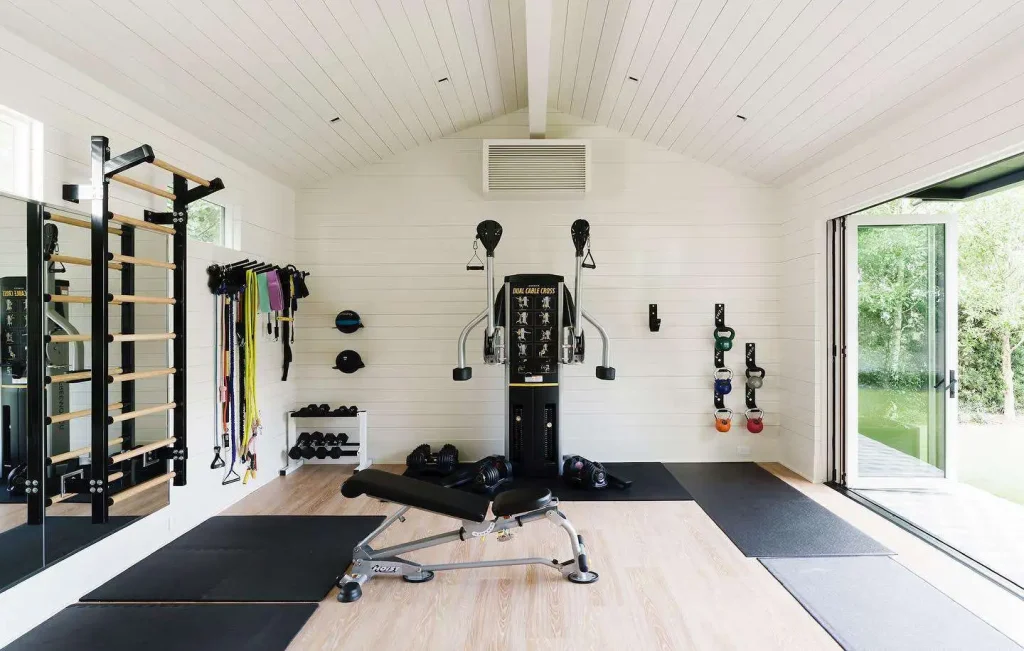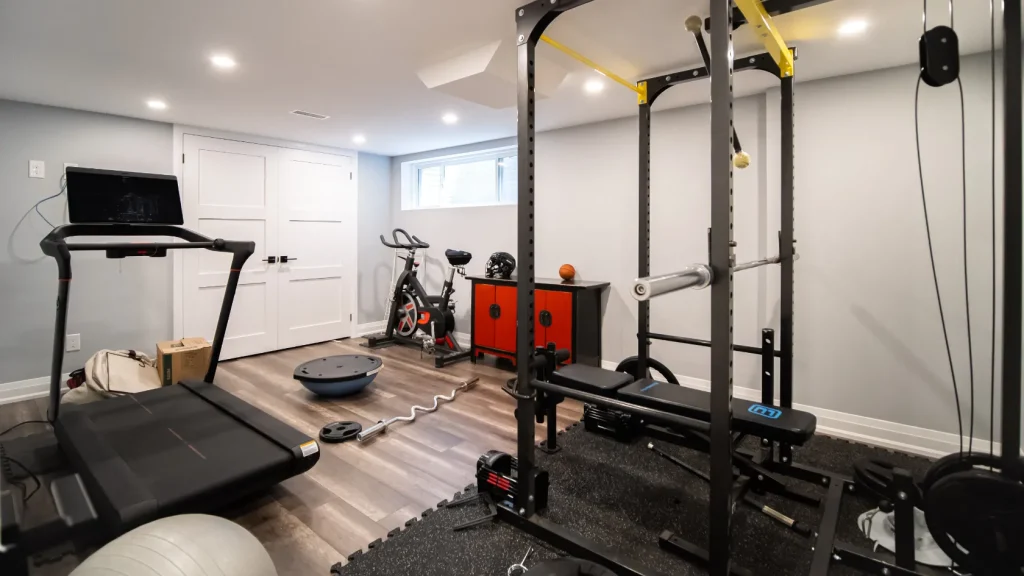Building a Home Gym: Transform Your Space Into an Empowering Fitness Sanctuary

With the increasing appeal of comfort and individualized fitness, the concept of a home gym has been approaching for some time. Even with some essential planning, you may transform your gym fit for any desired workouts. This gym may be a cost-effective substitute for expensive gym memberships and full-scale sessions or be intended to truly breathe and spend focused and restorative hours away from the crowds. This article will take you through the procedure of building a gym from the ground up, making it efficient, pleasing, and customized to your needs.
Table of Contents
ToggleWhy Build a Home Gym?
Skip waiting in line for the machine or making room in your schedule for travelling to and from the gym. A home gym lets you move in and work out whenever you want. Cost-Effective Though the cost up front may be high, in the long term, a home gym pays for itself by removing gym membership fees, additional-class costs, and travel expenses.
Personalization Design your space based on your fitness objectives and desired setting. You can concentrate on the equipment and workout types you choose to do and avoid sharing the machines and weights with others. Hygiene and Safety Maintaining a high level of cleanliness and keeping germs away from you means you are completely adhered to when working out in the comfort of your gym

Planning Your Home Gym: Key Considerations
1. Space Assessment
Evaluate the available space and decide where to set up your gym. It can be a spare room, garage, or even a corner of your living room. Ensure the area is well-ventilated and offers enough space for your intended exercises.
2. Equipment Selection
Choosing equipment depends on your workout preferences, goals, and space. Consider a mix of cardio and strength equipment, as well as accessories:
- Cardio: Treadmills, stationary bikes, rowing machines, or jump ropes.
- Strength Training: Dumbbells, kettlebells, resistance bands, or barbells with weight plates.
- Accessories: Yoga mats, exercise balls, and foam rollers.
3. Budget Planning
Decide on a budget, considering essential equipment first. You can start small and gradually expand your gym over time by adding new pieces.
4. Layout and Safety
Arrange your equipment to ensure smooth movement between stations, with enough clearance for exercises. Prioritize safety by securing weights, and placing mats on hard surfaces to prevent slips.
Setting Up Your Home Gym
-
Cardio Corner: Set up a designated cardio space, including a treadmill or open area for jumping rope.
-
Strength Training Zone: Pick a spot for weights and resistance training. A standing weight rack or weight storage bench can keep your exercise space tidy.
-
Flexibility and Recovery Section: Invest in a simple exercise mat for stretching, yoga, or Pilates. A foam roller or massage ball would also help relax your tight muscles post-workout.
-
Organizational Storage: Use shelves, baskets, or hooks to store accessories rather than letting them clutter your gym.
Maximizing the Home Gym Experience
-
Personalization and Atmosphere: The gym must possess a motivating atmosphere with good lighting, inspiring music, and colorful wall art . This would help make your gym hall an inviting space and one that you would love to work in.
-
Routine and Scheduling: You should Keep a workout protocol to develop your daily physio organizing capacity entirely. Treat your home gym like a professional gym by setting a time limit and working at that specific time as professionals do.
-
Professional guidance: Purchase online classes or personal trainers to ensure that your works are these and seeking your daily physio course. Y our progress is tracked or not. Make a journal or keep seasoned programmes and understand and rule there milestones in-season programmes in-season.
-
Designing Your Space: The first step in constructing a home gym is to select the ideal workout space. This does not have to imply dedicating a whole room to this effort, but there must be a place where you can move about freely and store your equipment. Ventilation, lighting, and noise disturbances should all be considered to ensure the pleasantness of your exercise environment. Wall-mounted racks or collapsible apparatus can help you maximize your storage space if your area is tiny.
Essential Equipment Selection: Every gym’s core is their equipment. Here are a few basic items to help you achieve your goals:
- Cardio Equipment: Treadmills, stationary bikes, and rowing machines are great for aerobic exercises.
- Strength Training: Free weights like dumbbells, kettlebells, and barbells can offer versatility. Resistance bands and weight benches can complement your strength training regimen.
- Flexibility Tools: Include yoga mats, foam rollers, and exercise balls to improve flexibility and muscle recovery.

Invest in quality equipment that aligns with your fitness goals rather than overwhelming yourself with unnecessary items.
Creating a Workout Routine
Once your home gym is ready, plan a workout routine that keeps you consistent and motivated. Consider integrating a mix of cardio, strength training, and flexibility exercises. If you’re unsure where to start, online resources and fitness apps can offer guidance. Setting specific goals, like improving cardiovascular health or increasing muscle strength, will help you measure your progress on line togel.
Organizing the Gym Area
A well-organized gym can make workouts more efficient. Label storage areas for equipment, keep weights in racks, and consider adding mirrors to check form and motivate yourself. Small touches, like a speaker system for upbeat music or posters with inspirational quotes, can create a more engaging workout environment.
Safety First
Safety should always be a priority when building your home gym. Learn the correct form for exercises, and use equipment appropriately. Ensure there’s enough space to move safely and maintain good posture. Consider having a first-aid kit handy and, if possible, install proper ventilation to avoid overheating.
Stay Accountable
Working out alone can make it easy to skip sessions or lose focus. To counteract this, track your progress by maintaining a workout journal or using fitness apps. You can also stay accountable by partnering with a friend or joining online fitness challenges.
Your Empowering Fitness Sanctuary
Building a home gym is synonymous with having that dedicated workout space. You need to ensure that you make smart moves when it comes to your equipment choices, workout routines as well as making or purchasing good products to ensure safety, such as rubber gym mats for home. This way, your home gym will become a place where you can train and be transformed – not matter your goals, strength, or simply relaxation.
Building a home gym can change the way you view fitness, turning your gym routine into something uniquely powerful and personal. Take-in your goals and needs so as to create a personalized workout sanctuary that complements health and productivity. If you plan accordingly, outfit your gym with the ideal selection of equipment, and create an energizing atmosphere, your gym will become happier and will hopefully drive your workout. Do it today and create the gym you have always wished for.
Also read: Pho Perfection: Savor the Soulful Flavors of Vietnam’s Beloved Noodle Soup



